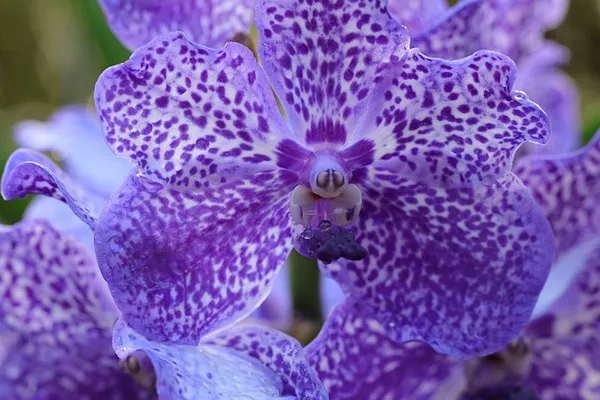As the year draws to a close and winter’s chill settles in, December brings with it a unique charm that is encapsulated by its birth month flower. Birth month flowers have long held symbolic significance, embodying traits and sentiments that resonate with those born during specific times of the year. For December, the Narcissus takes center stage, capturing the essence of this month through its history, symbolism, and inherent beauty.
See Also: March Flower: Discovering the Charm & Symbolism of Daffodils
The Narcissus: A Blooming Emblem of December
The Narcissus, a genus of predominantly spring-blooming perennial plants, stands as the birth month flower for December. Comprising a diverse array of species and cultivars, the Narcissus is commonly known by various names, including daffodil, jonquil, and paperwhite. Its distinct appearance and captivating fragrance have made it a popular choice for various celebrations, including weddings, birthdays, and festive decorations.
Historical and Cultural Significance
The Narcissus has deep-rooted historical and cultural significance across different civilizations. In Greek mythology, the flower is associated with the story of Narcissus, a handsome young man who was so entranced by his own reflection in a pool of water that he couldn’t bear to leave it, ultimately leading to his transformation into the flower that now bears his name. This tale has been interpreted as a cautionary metaphor for vanity and self-absorption, and the Narcissus flower continues to be a symbol of self-love and reflection.
The flower’s name is derived from the Greek word “narkissos,” which is believed to have originated from the word “narke,” meaning numbness or stupor. This etymology is linked to the plant’s toxic alkaloids, which can cause numbness when ingested. Interestingly, the toxicity of the Narcissus has led to its use in medicinal and herbal remedies throughout history.
Symbolism and Meanings
The Narcissus flower carries a range of symbolic meanings that resonate with the month of December. As a birth month flower, it is often associated with qualities such as hope, rebirth, and renewal. Its appearance during the winter season serves as a reminder that life continues to flourish even in the harshest conditions, reflecting resilience and determination.
Additionally, the Narcissus is often seen as a symbol of new beginnings, making it an ideal gift for individuals celebrating birthdays or embarking on new life journeys. Its bright and cheerful appearance can uplift spirits and infuse a sense of positivity, especially during the darker and colder months of the year.
Varieties of Narcissus
The Narcissus genus comprises a rich variety of species and cultivars, each possessing unique characteristics that contribute to its overall allure. Some of the most well-known varieties include the trumpet-shaped Large-cupped Daffodils, the fragrant Paperwhites, and the delicate Jonquils.
1.Large-cupped Daffodils: These daffodils are characterized by their large central trumpet surrounded by six petal-like tepals. They come in a range of color combinations, from bright yellow and white to bi-color variations.
2. Paperwhites: Known for their intense fragrance, Paperwhites are often grown indoors and produce clusters of small, star-shaped flowers. They are commonly associated with the holiday season, making them a popular choice for festive decorations.
3. Jonquils: Jonquils are known for their fragrant, multi-flowered clusters and slender, rush-like leaves. They typically have smaller cups compared to other daffodil varieties and emit a sweet and inviting scent.
Caring for December’s Blooms
Cultivating and caring for Narcissus flowers can be a rewarding endeavor, whether indoors or in a garden setting. Here are some essential tips to ensure the optimal growth and blooming of these enchanting flowers:
Planting: Plant Narcissus bulbs in well-draining soil during the fall months, ideally six to eight weeks before the first frost. Choose a location with ample sunlight to promote healthy growth.
Watering: While Narcissus bulbs require moisture to sprout, they do not thrive in waterlogged soil. Keep the soil evenly moist but not soggy to prevent rotting.
Indoor Cultivation: For indoor growth, Paperwhites are particularly popular due to their ease of cultivation and intoxicating fragrance. Plant them in containers with pebbles or soil, and place them in a bright, indirect light location.
Temperature: Narcissus flowers prefer cooler temperatures, which is why they thrive during the winter and early spring. Provide them with a cool environment to ensure longer-lasting blooms.
After-Bloom Care: After the flowers have faded, allow the foliage to continue growing until it turns yellow and withers naturally. This process allows the bulbs to store energy for the following year’s growth.
Conclusion
December’s birth month flower, the Narcissus, is a testament to the resilience of life in the face of adversity. Its vibrant colors, captivating fragrance, and historical significance make it a beloved emblem of hope, rebirth, and new beginnings. As we enter the final month of the year, the Narcissus serves as a reminder of the beauty that can emerge even in the coldest and darkest of times, embodying the spirit of December in all its glory. Whether gifted, cultivated, or admired in the wild, the Narcissus continues to enchant and inspire all those who encounter its radiant blooms.


